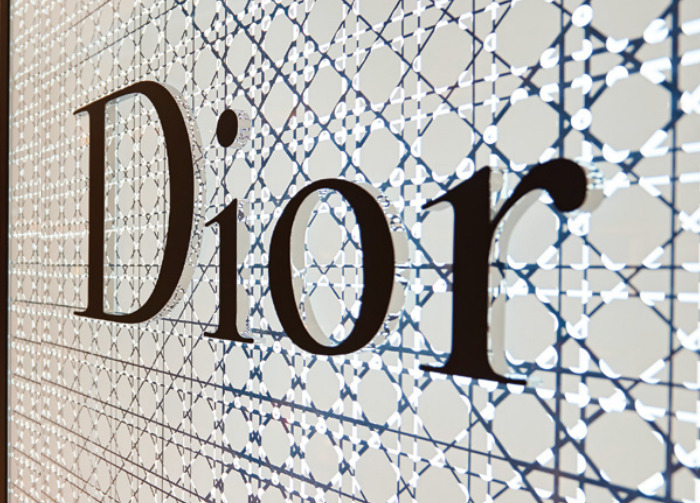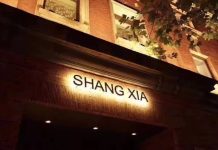By Ashok Som and Kazuhiro Asakawa
Most managers have been enamoured by continuously focusing on resource allocation and optimization in defining the strategies of their corporations. Alarmed by the loss of efficiency, speed and flexibility, they have continuously invested significant amounts of resources and time to align their operations. However, in most cases all they have done is to focus on the immediate advantages that have brought them only some breathing time. Once the environment readjusted itself as during the pandemic, they had to fall into the trap of going back to resource optimization. To succeed, corporations need to look beyond their traditional resource based strategies and move into developing their brand, migrating into brand based strategies. This choice needs to be made right.
Once the brand based view is integrated and aligned with the business strategy we argue that it can provide sustained competitive advantage for considerable period of time.
The Resource Bases View: A Traditional Perspective
Most focus has been on traditional means of value creation, such as the advantages provided through the superiority and monopolization of resources. For many decades, the Resource Based View (RBV) was the most widely used strategic approach. The tool brought an easy way to maximize the value of the product. It was seen as a sure-fire way to achieve brand success. The father of RBV approach had aptly referred that, In the end, this discussion reminds us that sustained competitive advantage cannot be created simply by evaluating environmental opportunities and threats, and then conducting businesses only in high-opportunity, low-threat environments. Rather, creating sustained competitive advantage depends on the unique resources and capabilities that a firm brings to competition in its environment. To discover these resources and capabilities, managers must look inside their firm for valuable, rare and costly-to-imitate resources, and then exploit these resources through their organization” Jay Barney [AME, 1995 (9:4)]i
The traditional resource based view saw the firm as a collection of unique resource and capability pool that, if utilized in a distinctive way, can be employed to drive competitive advantage. Valuable resources, however, can take a variety of forms. Many of those were overlooked by the traditional definition of a core competence.

Following in the footsteps, strategy consulting firms expanded this notion rapidly and achieved widespread recognition. Historically, it has been observed that easily copied sources of advantage are being irreversibly eroded. The survivors are those that are harnessing their advantage by the power that brand commands within the business landscape.
Beyond the Traditional RBV
Most major changes in strategy are quickly rejected. Traditionalists hold fast to established models of strategy, sometimes only to yield lukewarm results. Whether intended to improve quality, raise productivity to create a new corporate culture, the new is often discarded for the safe bets or incremental approach. And for many decades, the RBV was the most widely used strategic approach. The tool brought an easy way to maximize product value, and was seen as the path to achieving success in a competitive environment.
The traditional resource based view sees the firm as a collection of unique resource and capability pools that, if utilized in a distinctive way, can be employed to drive competitive advantage. This approach rests on internal perspective The resulting sustained competitive advantage transpires when a firm implements this unique value-creating strategy.
Valuable resources however, can take a variety of forms. Many of these are overlooked by the traditional definition of core competence. These may not necessarily be physical resources. Some intangible resources, such as knowledge of the product from a cultural standpoint, or technical expertise handed down from generation to generation, cannot be classified as a conventional resource. Or, the resource could even be the firm’s organizational structure. Entry barriers are sometimes merely resource barriers. An example of this is acquisition of core suppliers into the vertical value chain.
The mandate to re-invest in strategic resources may seem obvious. Potentially, both the tangible and intangible aspects of brand may create this value. A brand may derive its value from its physical resources. Or, valuable resources may emerge in the form of organizational capabilities. Competitive advantage, whatever its source, is ultimately attributed to the ownership of such a resource- one that allows it to outperform its competitors. Whether these resources are quantifiable or not is up to the strategist to define.
The Brand Based View
A framework that has the potential to cut through this ambiguity could be a point-of-departure in the strategy field. This approach goes beyond the traditional examination of resources as a source of value, and focuses more on the brand itself. Termed Brand Based View, the approach derives its strength from its ability to highlight why certain brands are successful- and where others are not. To answer this, one needs to think what the owner of the idea had in mind? Who were the customers? How was (s)he differentiating the products, goods and services? When did the product looked for ways to trade up or trade down? Apple has traded up its image from being a design enabled technology provider to a truly expensive brand. Tesla too, with Elon Musk at the helm, has transformed itself by trading up. Other trading-up examples include P&G’s launching of its high-end skin-care product SK-II based on the branding strategies based on mystic image, customize service through beauty councilors, and the emphasis on the benefits of herbal ingredients. Suntory’s Yamazaki brand is another case of trading up its image as a high-end whisky brand. On the other hand, brands like Infiniti, the luxury vehicle division of Nissan is trading down with executive models of its cars. This is a particularly powerful strategy with which the luxury brands have survived through multiple generations over hundreds of years. A framework that has the potential to cut through this ambiguity which we term as brand based advantage. Termed, Brand Based Value, the approach derives its strength from its ability to highlight why certain brands are successful through generations and others are not.

The Framework
BBV consists of the following key elements which play a major role to strengthen a firm’s brand based advantage.

The 3P idea
The dominant idea in creating a Brand Based View rests on a person, a philosophy and a sense of purpose. Take the example of some of today’s leading technology companies. Apple (Steve Jobs), Amazon (Jeff Bezos), Meta (Mark Zuckerberg), Alibaba (Jack Ma), Farfetch (Jose Neves) and Tencet (Pony Ma). All of them has been influenced substantially by their founders, with their philosophy and their purpose to create something they believed in. All in their life time. And they went to become multi-billion dollar businesses.
The Story
The use of story is perhaps the best way to convey a brand’s identity and ethos to its clientsii. This is perhaps what people want most: the stories of today, the anecdotes, stories of people who are connected and who share experiences. The stories are of the founders, his or her vision. The heritage, the history and the purpose of why the brand was created are critical to attain the excellence to survive the winds of time and change of generations. Competitive advantage based on the storytelling is likely to lead to timelessness to continue with integrity, humanity and trust in the community it serves. People don’t forget stories. If one speaks about a brand and associates it with an important experience from one’s life, people will remember it much better than if one merely explains the product to them. For example, Burberry has been related to the trench coat used in England, Rolex is associated with sports, perseverance, and time, Hermès evokes saddles and leather interiors, and Louis Vuitton brings to mind connotations of luggage and travel. They all embolden the vision of their founder Thomas Burberry, Hans Wilsdorf and Theirry Hermes respectively which continues after so many years. They created their community and till date consumers flock to this community due to its values of integrity, humanistic and trust in the brand.
Storytelling has, as a result, been a key enabler for the dream factor. A brand’s story is built on its ethos, which is in fact the myth. Once they myth is created it travels seamlessly through communities. A classic example of this is the tagline of DeBeers, which stated way back in 1947 that “A diamond is forever. How else could two months’ salary last forever?” This simple tag line transcends simultaneously the logic of desire, interest, pleasure and need. It persists after 75 years. It was written by copywriter Mary Frances Gerety at Philadelphia agency N.W. Ayer, which made it one of the best campaigns of the twentieth century. The advertisement invented the modern concept of the engagement ring and the diamond’s relationship with love and marriage. The story of the intimate history of Marilyn Monroe and the perfume Chanel No. 5 have enticed people for generations with her famous quote about wearing only Chanel No. 5 to bed. J’Adore, the perfume from Dior, tells the story of its creation in the short film Le Parfum. It emphasizes the story that the perfume was created from flowers around the world, combining the scents of Damask rose, Arabian jasmine, and Indian tuberose, while the glass bottles are blown in Murano, Italy.
The DNA, A & Codes & Brand Identity
The DNA of the brand is what makes it unique, differentiated and easily identifiable by consumers. It is the inherent composition of a brand. It is its essence. The DNA is the intangible aspect that is translated into the brand codes, which are the visual expression of the Brand DNA. The DNA and Codes are what constitute the major part of the brand story-telling experience. In the case of Dior, the DNA defines the consumer- a princess, a star, the center of attention; utterly feminine and delicately beautiful. And the codes of the brand are an expression of this – the roses, the color pink for femininity and gold for opulence, and the corolla which inspires the full skirts and silhouettes of Dior ball gowns. In contrast the DNA of Chanel is that of women’s liberation from full skirts, flounces and overt femininity. This translates into the straight silhouettes of the Chanel tweed suit, the practical, army-satchel inspired 2.55 handbag, and the little black dress. Chanel maintains its identity, one which was created decades before. Together with maintaining identity brands have to be relevant, desirable, and inspirational in today’s socio-cultural climate.

Brand identity is about the raison d’être of a product: how it is perceived by consumers and by competitors, what it stands for, what makes it unique, the promise it offers and the value it holds for its customers. A brand’s identity embodies its history, savoir-faire, and mystique. It is the sum of constitutive parts that make us recognize it as special and original. Building a brand identity takes time. Within the BBV, the concept of the brand – its name, identity and key characteristics – is considered fundamental. It has to be relevant, unwavering and clear. This strategy is to develop a reputation, its presence in such a way to leverage the brand status and awareness globally. To develop such a presence requires specific product and design attributes, quality, craftsmanship, minute attention to details to create innovative and unique products. These key products often epitomise the brand signature or brand DNA, as they can assist in portraying the personality and value of the creators. For example, as depicted in its brand identity, Chanel embodies the strong woman, Coco Chanel, who has climbed the social ladder. This was Gabrielle Chanel’s story. Her modest origins, and the fact that she reached the pinnacle of society at a time when most women did not have a prestigious career, is part of the brand’s identity. To express this core identity, Chanel’s retail locations worldwide have majestic staircases, usually in white, symbolizing their founder’s upward social mobility. Brand Codes and DNA are essential for creating a Brand Based Advantage, as they clearly define who the brand is, and establish themselves firmly in the minds of consumers.

Create Desire and Aspiration through communities
Many goods do not cater to our primary needs. This means that they are “non-essential.” Production and distribution therefore heavily depend on a company’s capacity to create desire for goods by instilling one of the logics to have them –the logic of need, desire, interest and or pleasure or a combination of the all four. A dream, a desire, an interest around the product that appeals to the consumer. Creation of “the dream” is strongly linked to the manner in which the brand DNA is marketed and communicated, so as to put forth a unique and unforgettable brand identity. When the market was local, in France or in Italy, this was easy, but with the globalization of markets today, the dream has to cross borders and cultures.
Different cultures dream differently though, and their aspirations vary. In similar vein, consider the case of luggage brands Rimowa and Tumi. The luggage was differentiated in such a way that they both became brands to reckon with – Rimova with technology, Tumi with materials, created their own specific Brand Based Advantage within their specific category of luggage industry. While the case of DeBeers, a renowned leader in the diamond industry, a potential threat was turned into an advantage. Artificial diamonds, that have most common use as industrial goods material, were seen as something that could upend a market that depends on a perception of relative scarcity. The lab that manufactures synthetic stones has created a brand through DeBeers, called Lightbox, that has capitalized on the brand’s existing BBA. In similar vein, Harley Davidson motorcycles command a premium price and extreme brand loyalty in its community despite the fact that in terms of technical superiority and product performance, it is easily surpassed by some of its Japanese and European competitors. Shiseido relied on world-renowned designer’s brands to overcome the lack of credibility as a Japanese producer. Dassai, a sake brand of Asahi Shuzo, was promoted to be high quality sake which fits universal cuisine, to overcome negative image toward Japanese sake in the international market.
The New Business Landscape: The Brand Based View strategy
The post-pandemic business landscape is undergoing a transformation be it digital during the current situation, where new ways to think through a problem becomes critical. On multiple fronts, strategy has come under fire with innovation of new ideas. More-often-than-not organizations are focusing more on building-their-brand, their brand-based-community rather than trying to differentiate wholly on the product. They are trying to provide unparalleled service to their community to those who are loyal to their brand, their brand value and the value that the organization stand for. This has happened as there has been a shift in the consumer perceptions of value during the post-pandemic.
Why this shift? The brand is an identity in itself, one that can be leveraged to achieve a sustainable competitive advantage that can outlast one provided by traditional means such as resources. The brand once created, nurtured and efficiently managed to be both timeless and contemporary can create sustained advantage over generations. This tectonic shift especially during the post-pandemic scenario, thus demands a critical re-think of yester year’s strategy principles: First, the sources and locus of competitive advantage now lie in the innovation inside the firm that leads to creation of desire outside the firm. The advantage is cumulative as the desire necessitates a pull rather than a push (which erodes over time as competitors catch up). Second, it is more of a mind-capture, an experience rather than value-capture, of ownership. It means that the community that a brand creates protects itself not only with loyalty but creating mind-space ownership. The community has an open dialogue with the brand within the social landscape it belongs to. Third, the pace of change in the markets creates the need to access different communities of customers, collaborating with brands at different levels of evolution and buying potential of customers. This has enhanced with the rise of social media, social commerce such as e-commerce and m-commerce.
The above three can be achieved when the brand rightfully achieves credibility (trusted and believed in), legitimacy (conforming to the rules, tradition that can be logically justified and validated) and authenticity (true to its values which it stands for). To build credibility, legitimacy and authenticity takes a lifetime. The time invested in building the identity, clarifying the ethos, and being true to the clients is what is often missed by many. It is something that is not taken into account when one calculates sales using different pricing models. To make a brand well known is an art in and of itself. It is not a science. The meaning of the brand, and what it stands for, needs to be clarified both internally and externally. The codes need to be defined: the brand needs to know who it is, what it represents and why it exists. One can buy an accessory and it is accessible. One can buy a little something and one belongs to a certain group. Hence, we envision to create a sustainable competitive advantage that creates value for the long term – what we term as the brand based advantage.
The Idea in Practice
At every step in a corporation, resource allocation is critical to the strategy making process and its implementation. During the process, managers face the dilemma of arbitrage. Most corporations are more concerned about their resource based values such as – technology, functionality, service – but have overlooked the importance of aspirational and emotional values of the brand. A brand is an identity. It is the reflection of what customers feel with their senses. To do this effectively corporations need to have a concrete idea of what they stand for and direct all actions in creating the brand identity that will be the basis of the brand based view. Moving from the resource based view to the brand based view the managers are in fact changing the constraint of resource from the supply side to the demand side. It is not anymore about the resource allocation that is the key to implementation but the aspiration and the pull from the consumer that will drive the implementation. As consumer aspires and pay higher prices the brand drives the growth of the corporation. This produces a visible and immediate impact designed at keeping the stakeholder in good faith while the brand trades-up.
- Clarify intent – the 3P, the story, the DNA, the desire.
- Assign and reiterate the aspirational nature of the brand
- Communicate about the value of the brand rather than the utility of the product
- Align the product organization with the concept of credibility, legitimacy and authenticity
- Co-create and integrate emotional connection
- Deliver with transparency seamless, transaction less, personalized customer service for individuals and for the community it serves.
This article was originally published on February 1, 2022.
About the Authors

Ashok Som is Professor at the Management Department. Professor Som’s expertise is in global strategy and re-designing organizations. He is author of the books The Road to Luxury: The New Frontiers in Luxury Brand Management (Wiley, 2021), International Management: Managing the Global Corporation (McGrawHill, 2009) and Organization Re-design and Innovative HRM (Oxford University Press, 2008). His current research is on creative industries focusing on luxury, movie and art industries. He is a regular speaker in international conferences and advises European and Indian multi-nationals.

Kazuhiro Asakawa is Professor of Global Innovation Management at Graduate School of Business Administration, Keio University, Japan. Kaz received his Ph.D. and M.Sc. from INSEAD, France, his MBA from Harvard Business School, and his BA summa cum laude in Political Economy from Waseda University, Japan.
References
- Barney, J (1995). Looking inside for competitive advantage. Academy of Management Perspectives. 9(4):
- Som, A & Blanckaert. C (2021). The Road to Luxury. Wiley (2nd edition)



































